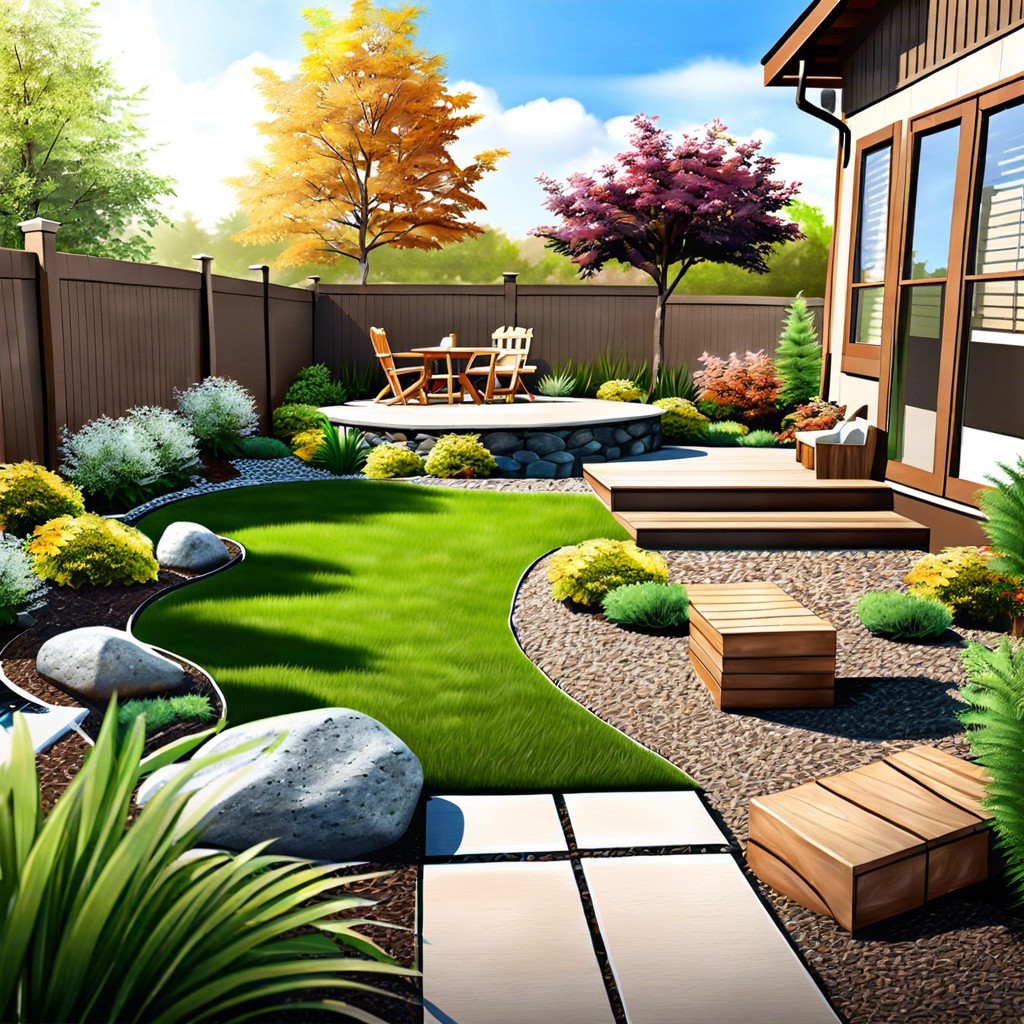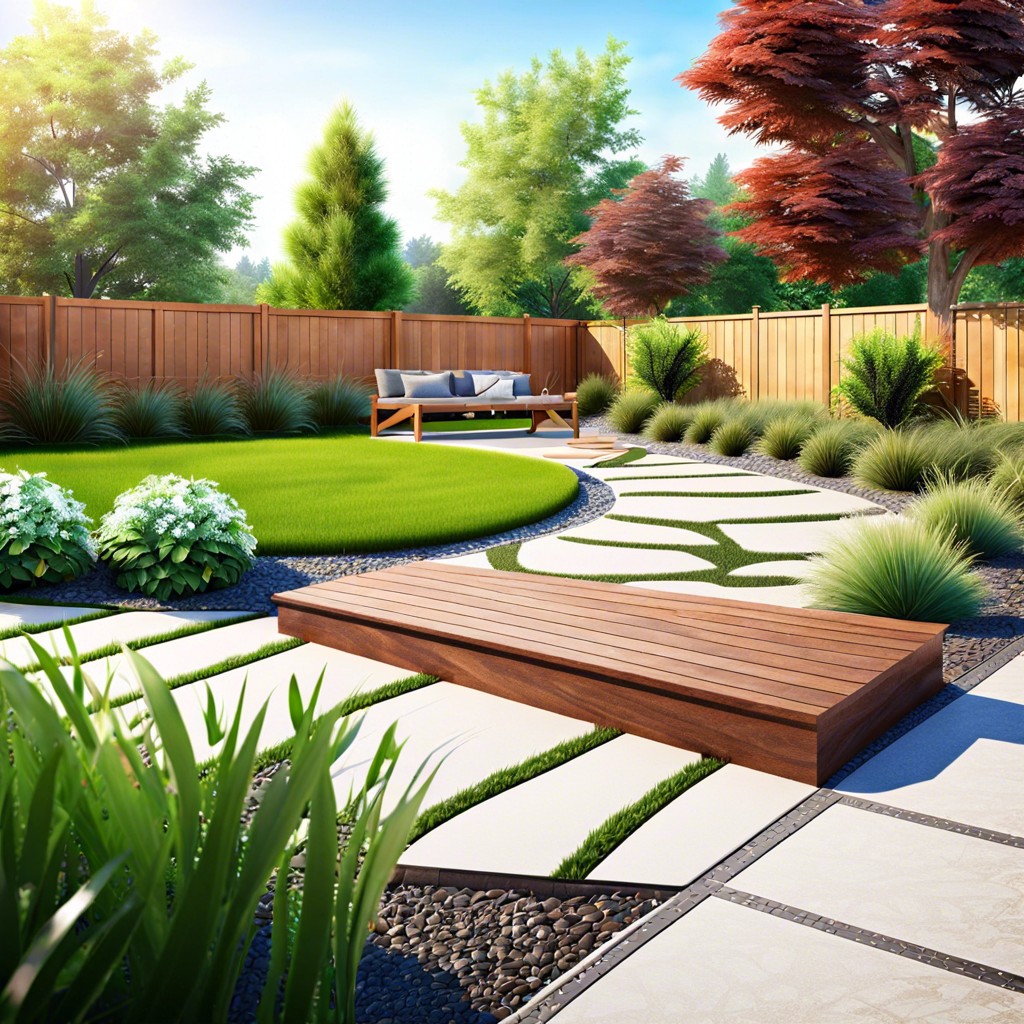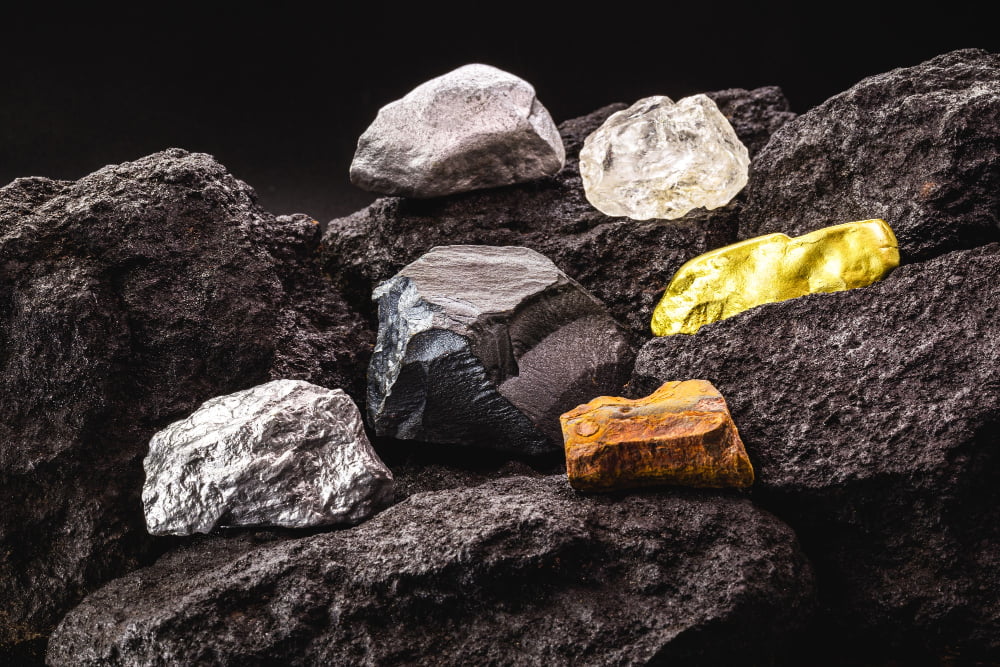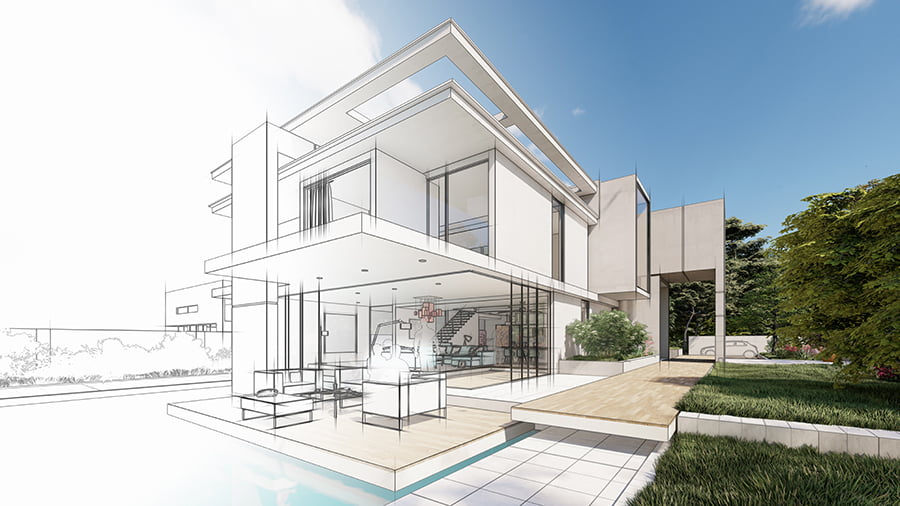In this comprehensive guide, you’ll learn about the various cost factors involved in landscaping your backyard and how to budget for the transformation of your outdoor space.
Key takeaways:
- Labor and materials are the primary cost considerations for backyard landscaping.
- Labor costs vary based on expertise and project scope.
- Materials selection impacts costs and long-term maintenance.
- Factors that affect cost include size, complexity, materials, labor, and location.
- Larger yards require more materials, labor, and time, increasing overall cost.
Basic Cost Considerations for Backyard Landscaping

When approaching the task of landscaping your backyard, it’s important to consider two primary expenses: labor and materials. Labor costs will vary depending on whether you hire a professional landscaping company or choose to tackle the project yourself. Professional services are typically billed by the hour or by overall project size, and can include planning, installation, and even maintenance.
Materials and supplies, on the other hand, span a wide range—from plants and soil to hardscaping materials like pavers and stones. The choice of plants, quality, and quantity of materials, coupled with the desired features such as patios, decks, or water fixtures, will greatly influence the overall expense.
Additionally, don’t forget to budget for any special equipment that might be necessary for installation, which can either be purchased or rented, depending on your needs and the scale of your project. Bearing in mind these basic cost considerations will help in planning a budget that aligns with your vision for the backyard space.
Labor Costs
When embarking on a backyard landscaping project, labor is one of the significant expenses to consider. This cost widely varies depending on the scope of work and the level of expertise required. Professionals such as landscape designers and architects often charge for their services either by the hour or through a flat fee based on the project. Hourly rates for landscapers can range from $50 to $150, while more complex projects can attract fees into the thousands.
The duration of the project also impacts labor costs. A simple garden layout may take a few days, whereas a complete backyard transformation with hardscaping and planting may span several weeks. Additionally, specialized work, such as installing a retaining wall or a water feature, requires skilled laborers who command higher wages due to their expertise and the complexity of the task.
Remember that details matter—clear communication with the contractors about what you want can prevent miscommunications, avoiding additional costs for rework. Contractors should also handle their insurance and bonding, which protects you from added expenses in the event of an injury or damage to your property during the landscaping process.
By understanding these aspects of labor costs, you can more accurately forecast the total investment necessary to create your dream backyard landscape.
Materials and Supplies Costs
Selecting the right materials and supplies is a critical step in landscaping that significantly impacts your final costs. Options range from plants and sod to mulch, stone, and pavers, each varying in price. When planning your budget, consider the quality and longevity of the materials; while higher-grade options may have a larger upfront cost, they can provide greater durability and require less maintenance, potentially saving money over time.
Additionally, the choice of plants can fluctuate in price depending on whether you opt for mature specimens or start with seedlings. Don’t forget to factor in the necessary soil enhancements or irrigation systems that your particular landscape design might need. Eco-friendly choices, like native plants and drought-resistant varieties, can also lead to water savings and reduce long-term costs.
Bear in mind that delivery fees for heavy materials can add a considerable amount to your overall expenses, especially for large-scale projects. By sourcing materials locally and checking for bulk purchase options, you may find significant savings. Planning efficiently to buy just the right quantity reduces waste and avoids overspending. Always remember, investing in the initial planning stage can lead to better cost control as you purchase your backyard landscaping materials and supplies.
Factors That Affect the Backyard Landscaping Cost
When planning your backyard transformation, the size is a primary factor; larger spaces require more materials and labor, leading to higher costs. The shape of your land also plays a role—irregular or sloped terrains may need additional work like leveling or terracing, which can add to the expense.
The complexity of your desired design significantly impacts your budget. A simple layout with basic features is obviously less costly than an elaborate oasis with intricate hardscapes, water features, or outdoor kitchens. Think about the cost of the individual elements you wish to include, such as patios, fire pits, or pergolas.
Choice of materials is another cost variable. The spectrum ranges from economical options like mulch and crushed stone to high-end choices like flagstone or custom concrete work. Living elements like sod, shrubs, and trees can also vary widely in price based on type, size, and maturity.
Labor can’t be overlooked, as the skill level and expertise required for the installation impacts the price. Professional landscaping services can provide efficiency and quality but at a premium compared to doing it yourself or hiring less experienced help.
Lastly, your location influences costs too. Prices for landscaping services and materials can vary by region based on availability and standard of living. It’s always a good idea to source multiple quotes from local providers to understand the market rate in your area.
Size of the Backyard
The expanse of your outdoor space plays a pivotal role in budgeting for landscape transformation. Larger yards require more materials, labor, and time, which naturally escalates the overall cost. Here’s what to consider:
First, understand that with more ground to cover, you’ll need a greater quantity of sod, plants, and paving materials. These items are typically priced per square foot or per unit, multiplying the cost as your yard’s square footage increases.
Additionally, the landscape features you dream of incorporating—be it a spacious patio, a winding path, or an ornamental garden—will fill more area in a larger yard, leading to a higher price tag for both materials and installation.
Labor costs also scale up since there are simply more tasks to complete over a more significant area. This might include soil preparation, planting, hardscaping, and more meticulous design elements that require professional expertise.
Lastly, even seemingly small decisions can have a substantial financial impact in bigger spaces. Choosing between different types of grass, for instance, might result in a cost difference of several hundred dollars given the increased coverage area.
Therefore, when estimating the cost to landscape your backyard, consider not just the size but also how you intend to use every section. A clear vision paired with smart planning can help manage expenses, regardless of your backyard’s dimensions.




